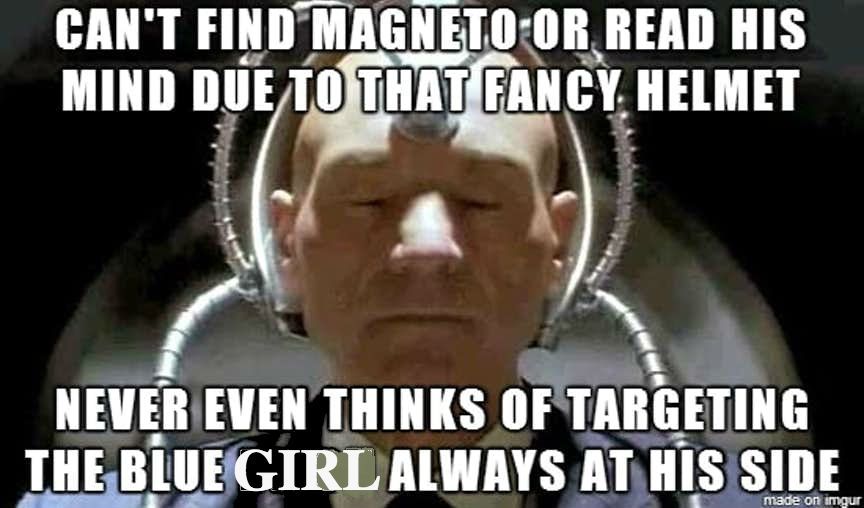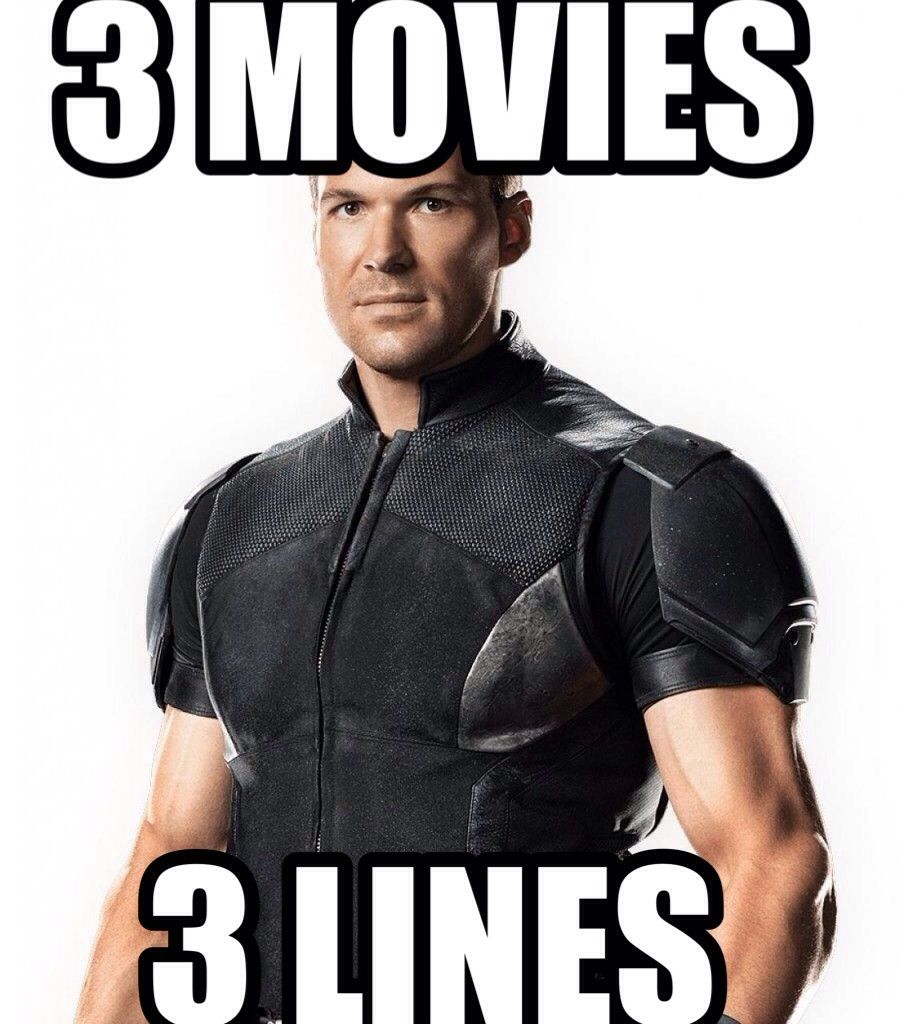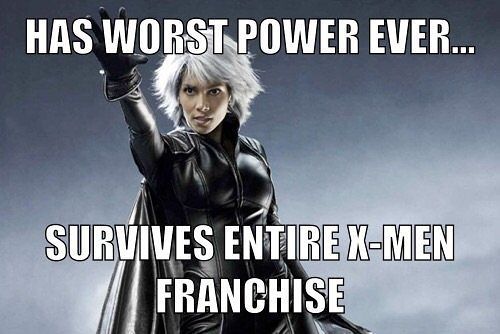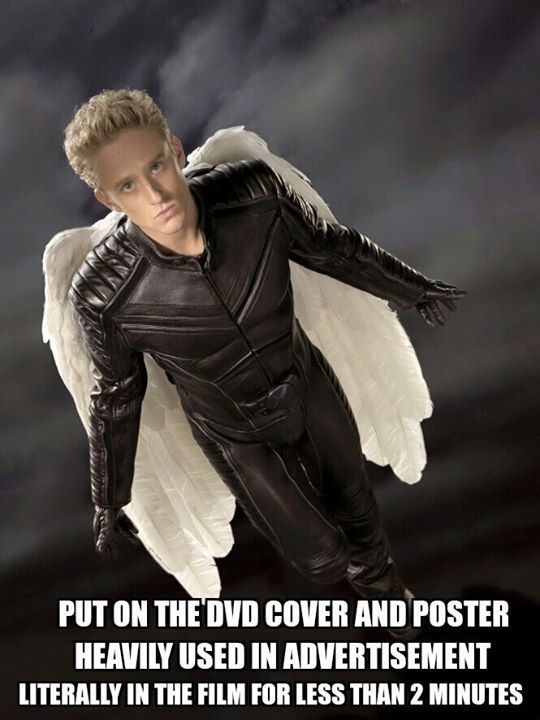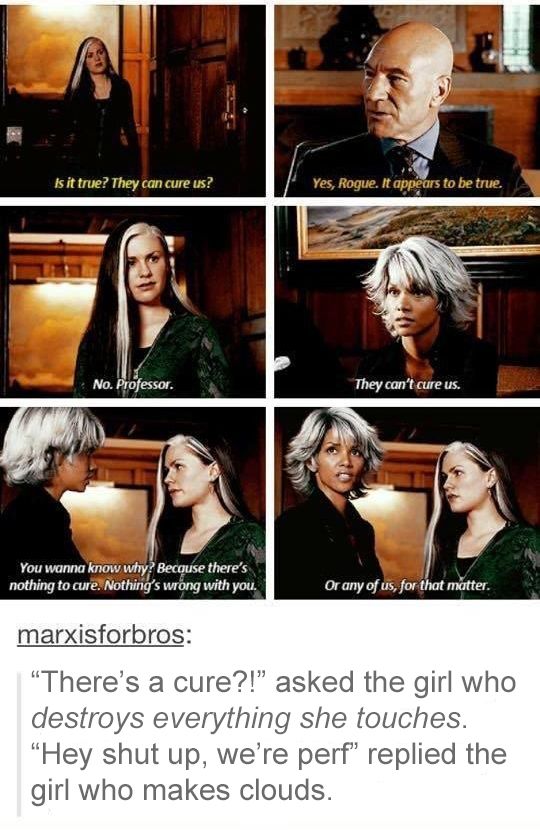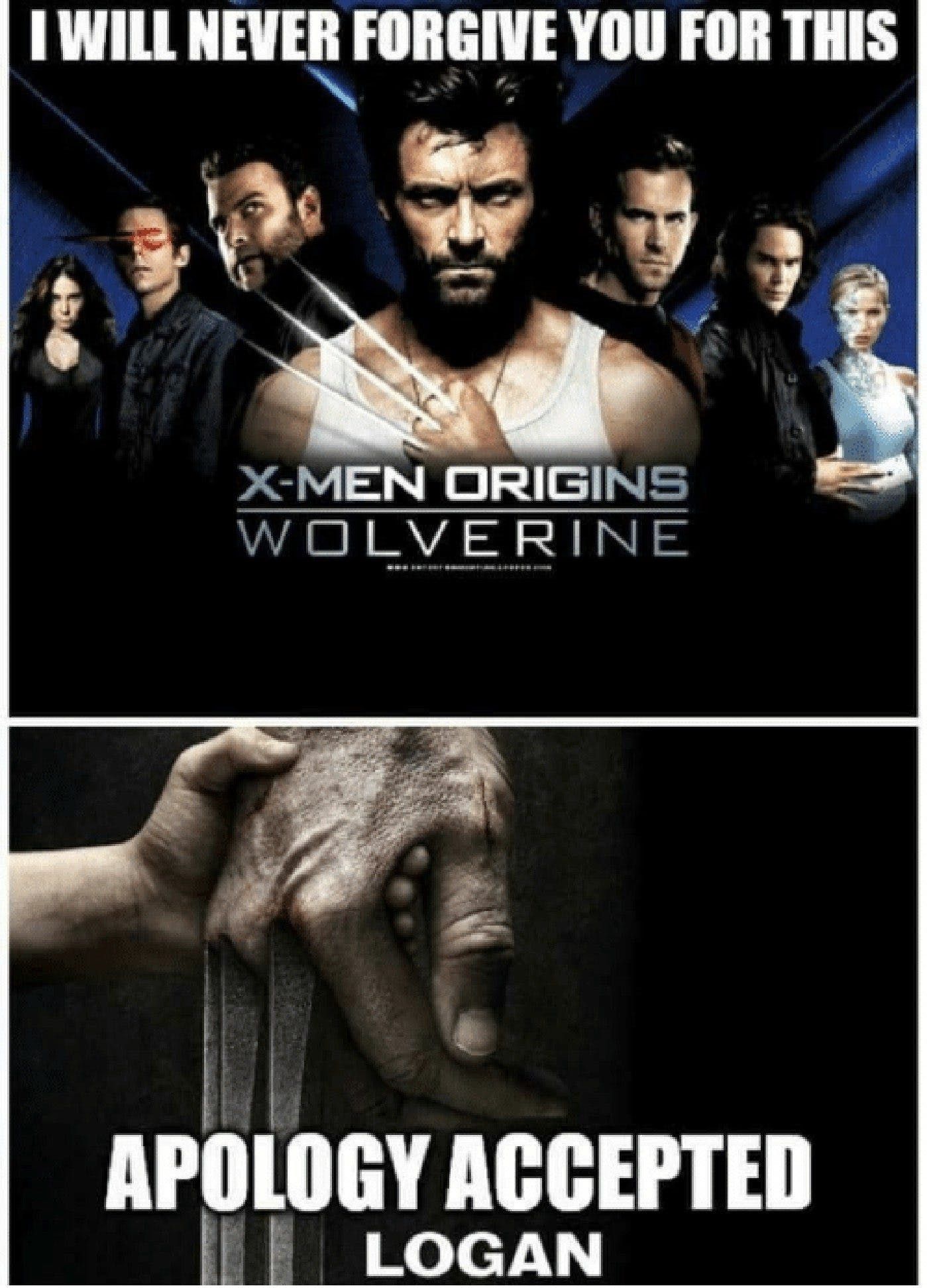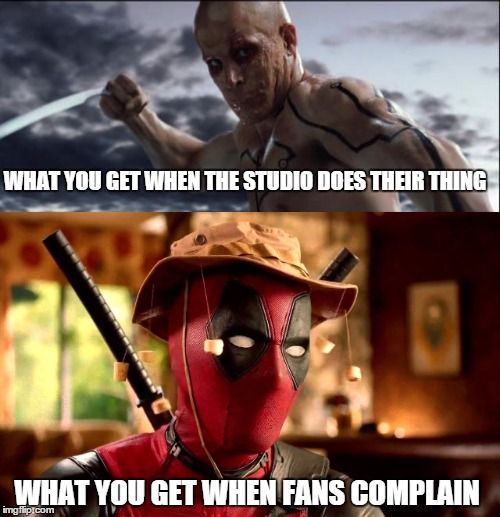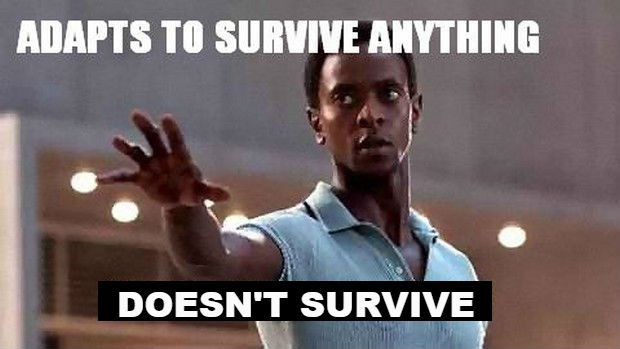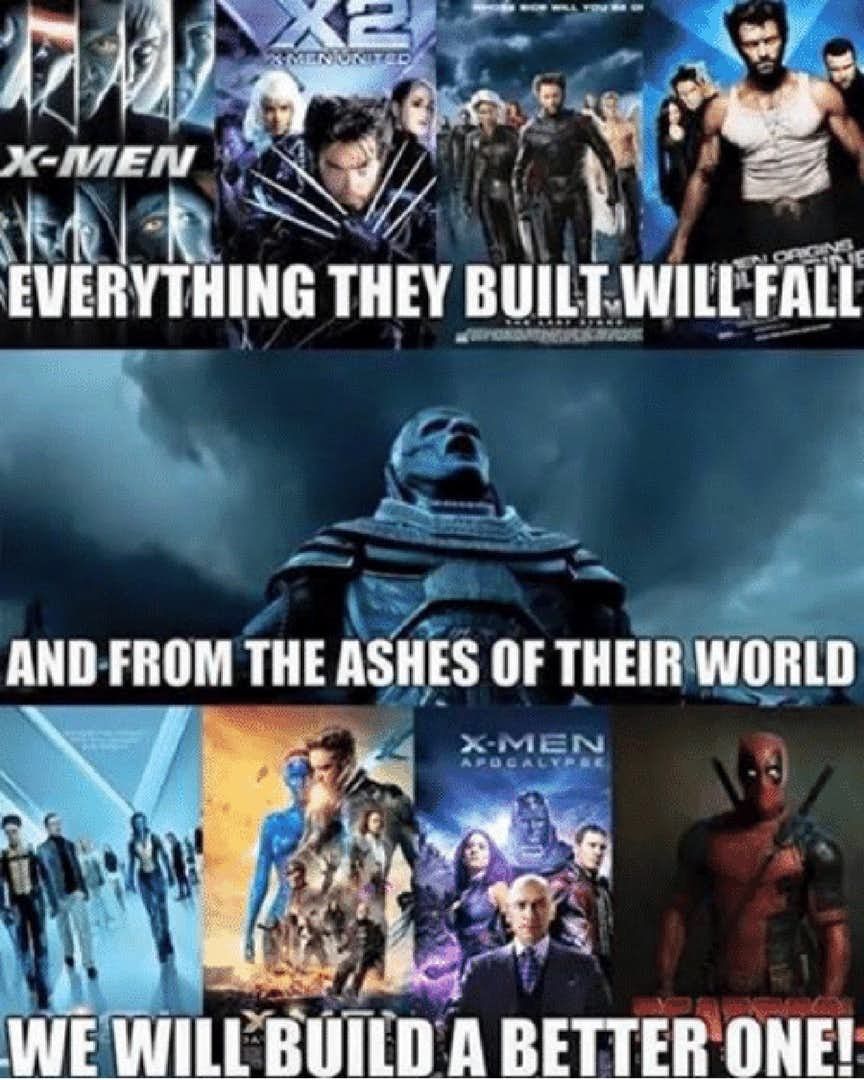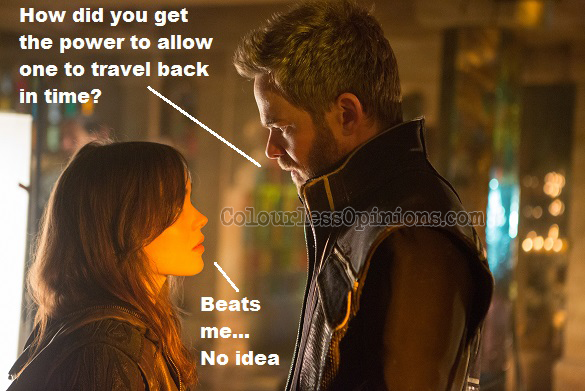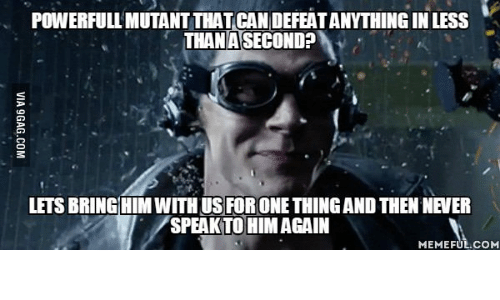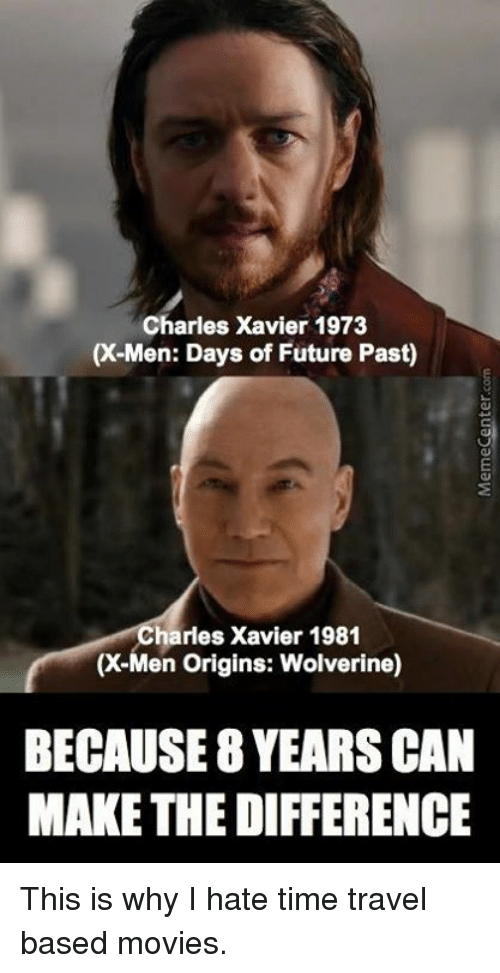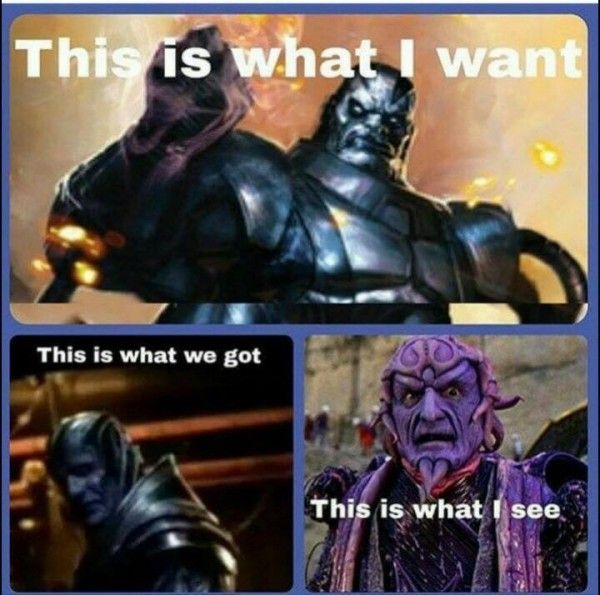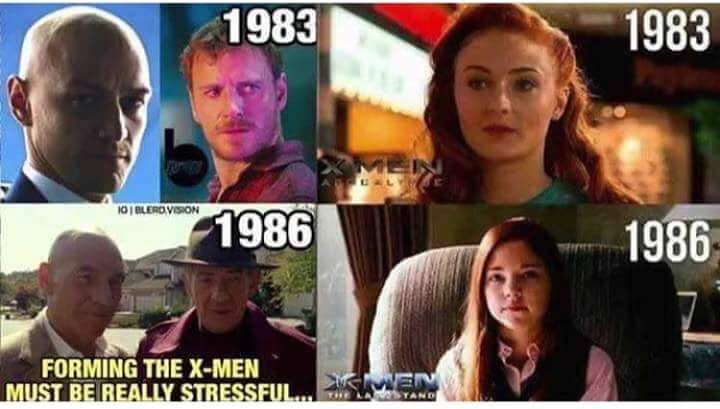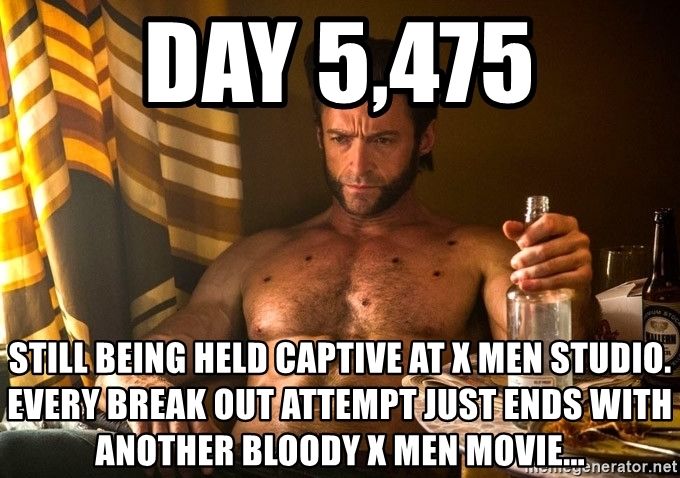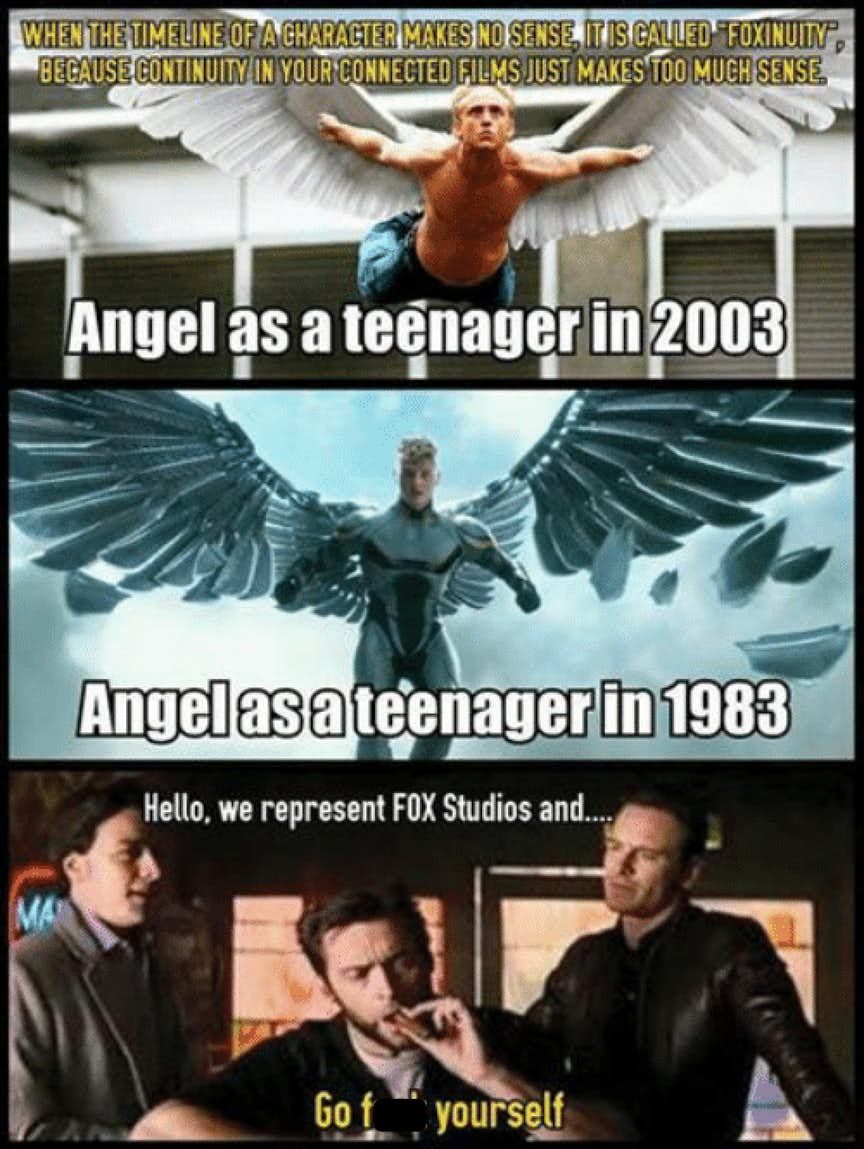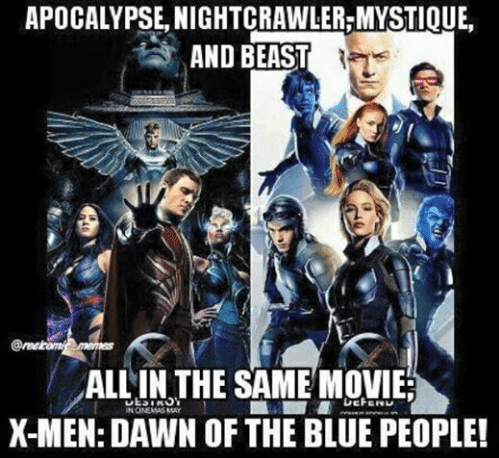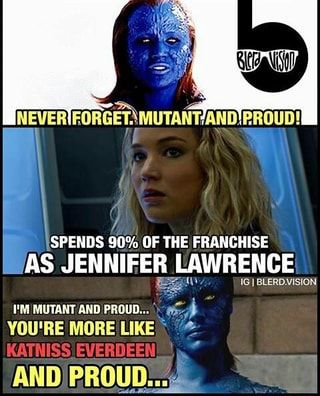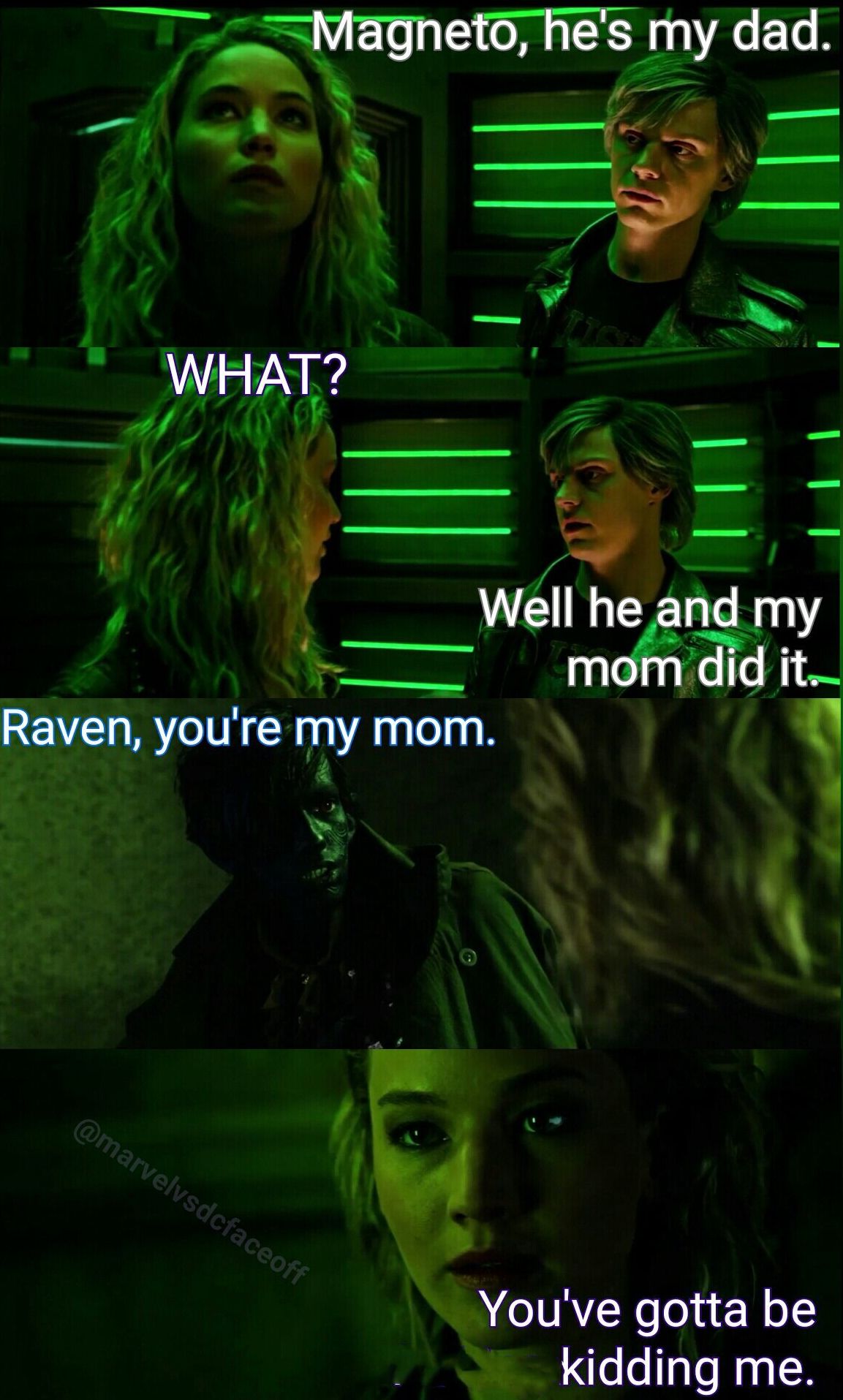Eight years before Marvel Studios perfected the shared universe template, 20th Century Fox hired Bryan Singer to direct an all-star cast including a Patrick Stewart, Ian McKellan, Rebecca Romijn, Halle Berry, James Marsden, and a then-unknown Hugh Jackman, and the X-Men franchise was born.
The original movie was a massive success with critics and audiences, and is credited by many with jump-starting the superhero movie boom that continues today.
The movie crushed the box office (earning $296 million worldwide on a $75 million budget) so, naturally, Fox made a sequel (X2: X-Men United). Then they made another (X-Men: The Last Stand). Then they made a Wolverine origin movie (X-Men Origins: Wolverine). Then came a prequel that rebooted the franchise (X-Men: First Class).
Then another Wolverine solo movie (The Wolverine) followed by a sequel to the reboot prequel that featured both the original and new casts (X-Men: Days of Future Past).
Then came a spin-off for a character who was grossly mishandled years earlier (Deadpool), followed by another prequel set in the 1980's (X-Men: Apocalypse), and then the conclusion to the Wolverine trilogy (Logan), and another sequel (Deadpool 2).
As you may have guessed by now, the franchise hasn't exactly been well-planned.
Instead, producers have essentially been flying by the seat of their pants, leading to a series of movies that, while mostly entertaining, don't make very much sense-- and we have the memes to prove it.
Here are the 25 Memes That Show The X-Men Movies Make No Sense.
professor x doesn't think outside of the box
There have been very few casting announcements as celebrated as Patrick Stewart's was when it was revealed that he would be bringing Professor Charles Xavier to life on the big screen in 2000's X-Men. (Even Hugh Jackman, whose portrayals as Wolverine have since become the stuff of legend, was originally ridiculed for being too tall for the role.)
Stewart, however, brought gravitas to a role that badly needed it. After all, who better to play the leader of the X-Men than Jean-Luc Picard himself. (Plus, Stewart had already been rocking the bald look for quite some time.)
It hasn’t been all hunky-dory for Professor X, though, as the man has had quite a few oversights in his role as leader of the X-Men. First and foremost is his inability to use his telepathy to find Magneto and put an end to the supervillain’s shenanigans.
In the original movie, Xavier says that he’s unable to locate Magneto because of the latter’s helmet, which shield’s Magneto’s mind from Xavier’s ability.
However, this doesn’t explain why Xavier doesn’t simply focus on the unprotected minds of Magneto’s well-known henchmen Sabretooth, Toad, or Mystique to find the Brotherhood of Mutants.
Heck, Magneto has apparently had that helmet since the 1960s. You’d think by this point Xavier would have figured out that if he simply tracks Mystique, then he'll find Magneto.
mean wolverine
Hugh Jackman's Wolverine has had quite the character arc over the course of his nine (yes, nine) appearances in X-Men movies. He was portrayed as a curt and unapologetic cage-fighting loner in the original movie and gradually evolved into a caring team leader by the original trilogy's end.
Then X-Men Origins: Wolverine showed audiences a look at his past where we got to see him bravely fight in war after war alongside his brother Sabretooth and form a loving and caring relationship with Kayla Silverfox.
The Wolverine showed the character's vulnerable side when he was forced to cope with losing his healing ability, and then Logan, well, Logan took just about everything from him now didn't it?
One of the better scenes to come out of X-Men Origins: Wolverine is the opening credits montage that shows him and Sabretooth fighting in the American Civil War, both World Wars, and the Vietnam War.
What gets lost in this sequence is the fact that Wolverine is actually Canadian, so it was nice of him to volunteer for service in both the American Civil and Vietnam wars.
The movie does address Wolverine's citizenship later on when William Stryker tries to recruit him for the "Weapon X" program exclaiming, "Your country needs you!" to which Wolverine replies, "I'm Canadian."
Despite all this, not once in any of the movies does Wolverine ever say "sorry". And if there's one thing Canadians are known for, it's their politeness. Never forget who you are, Logan.
poor colossus
Piotr "Peter" Nikolayevich Rasputin, better known by his alias Colossus, has been a favorite among X-Men fans ever since he was first introduced in 1975.
He also has the distinct honor of being one of the six playable characters to appear in The Uncanny X-Men, the amazing arcade game first produced by Konami in 1992. (For those wondering, the other five are Cyclops, Wolverine, Storm, Nightcrawler, and Dazzler.)
The character has also played a large part in the Deadpool movies, providing Wade with some much-needed muscle in fights against Angel Dust in Deadpool and another famous X-Men villain in Deadpool 2 (who shall remain nameless in order to avoid spoilers).
Unfortunately, these appearances don’t change the fact that the character was a complete afterthought in the original trilogy.
Colossus first appears in X2: X-Men United with Daniel Cudmore in the role. Audiences got their first glimpse of the character carrying a big-screen television with ease before he returns later on to defeat several of William Stryker’s soldiers.
He offers to help Wolverine in his fight against the rest of the soldiers but is turned down and doesn’t appear for the rest of the movie.
He has a slightly larger role in X-Men: The Last Stand and appears briefly in Days of Future Past, but does little of significance in either movie, which is a darn shame considering the character’s rich history.
undervalued storm
Ororo Munroe (aka Storm) was first created back in 1975 and has had quite a history in the X-Men comics, animated series, and video games.
In the comics, she is one of the most powerful mutants in the world who has the ability to manipulate the weather with potentially catastrophic consequences. She has shown the ability to control temperature, humidity, and precipitation, and can incite hurricanes and tornadoes.
In the movies, however, she is portrayed as rather weak. Of course, this is essential to making the movies compelling since the alternative is having her conjure up powerful storms at will, thereby making her omnipotent and removing all stakes from the story. Unfortunately, the movies went too far in the other direction.
For proof of this, look no further than the original movie when she and Cyclops square off against Toad and Sabretooth in Grand Central Terminal.
Sabretooth grabs Storm by the throat and slams her head against a glass window. She is absolutely powerless until Cyclops accidentally blows a hole in the ceiling (likely wounding hundreds of people in the process) and allows her to conjure a storm and blast Sabretooth with a lightning bolt.
By this logic, Storm is rendered useless whenever she's indoors. Yet she survives until the franchise's end. (At least until Logan. Nobody survives Logan.)
False advertising
The X-Men franchise has generally done a good job in consistently adding new and intriguing characters to its sequels. The original, obviously, introduced us to many of the franchise's major characters like Wolverine, Cyclops, Storm, Jean Grey, Rogue, Professor X, Magneto, and Mystique in one fell swoop.
Each subsequent sequel has added to the X-Men role call. X2: X-Men United introduced Kurt Wagner (aka Nightcrawler) and Yuriko Oyama (aka Lady Deathstrike), and gave audiences their first glimpse of Colossus.
X-Men: The Last Stand, meanwhile, introduced the likes of Hank McCoy (aka Beast), Cain Marko (aka Juggernaut), and Warren Worthington III (aka Angel).
Angel (played by Ben Foster) was prominently featured in nearly all of the movie's marketing materials. He stands just behind Wolverine in many of the movie's posters (and in front of many prominent characters like Professor X, Beast, Cyclops, and Jean Grey) and plays a sizable role in the trailers.
In fact, the trailer features several dramatic scenes of Angel refusing the mutant cure, spreading his wings heroically, and crashing through a window and flying fearlessly (while a Wolverine voiceover talks about the troubles that come from "caging the beast").
Naturally, all of this led to audiences assuming a large role for Angel in the movie-- but nope.
Instead, the character received very few minutes of screen time, appearing briefly in the beginning, then returning in the end, and that's about it.
After the immense successes that were X-Men and X2: X-Men United, the franchise took a bit of a dip in terms of quality. Whereas the first two entries received 81% and 85% on Rotten Tomatoes (indicating they were generally enjoyed by critics and audiences), X-Men: The Last Stand received just 58% (indicating it was not).
The dip was attributed to the loss of director Bryan Singer (who helmed the first two entries before departing to direct Superman Returns) who was replaced by Brett Ratner.
The movie centers around the development of a cure to the mutant X gene, which would remove the abilities of those mutants injected with it.
Naturally, Rogue, whose ability is so strong that she destroys everything she touches, is intrigued by the prospect of a cure. Storm, who can control the weather and poses no threat to anyone unless she so chooses, is against it and tries to convince Rogue that she is better off with her ability than without it.
Storm really needs to mind her business on this one. We’re not talking about the ability to make it rain. Rogue is literally incapable of living a normal life. She can’t touch people without hurting them.
Cut the kid a break and let her use the cure.
Failure and redemption
As significant as the dip in quality between X2 and The Last Stand was, it pales in comparison to the drop that occurred between The Last Stand and X-Men Origins: Wolverine.
Generally considered to be the weakest of the X-Men movies so far, Origins was supposed to be the first in a series of X-Men spin-offs that would tell the origin stories of the franchise’s most popular characters.
When the movie flopped at the box office, 20th Century Fox quickly scrapped plans for X-Men Origins: Magneto and instead greenlit X-Men: First Class.
Origins failed at seemingly every opportunity. It muddied the franchise’s continuity by making Sabretooth and Wolverine brothers (a fact that is completely ignored in the original film), squandered fan-favorite Gambit, and completely mishandled a great performance by Ryan Reynolds as Wade Wilson (aka Deadpool).
It seemed there was no redemption for the franchise or the character after this mess of a movie. Luckily, First Class helped to restore the series to its former glory and The Wolverine was a solid entry for Wolverine himself.
Then came Logan, which was the gritty, bloody, unapologetic, R-Rated movie fans and critics wanted. It was an excellent movie that redeemed Origins and gave the character the send-off that he deserved.
old vs new deadpool
X-Men Origins: Wolverine has plenty of flaws. The biggest by far is it’s handling of Wade Wilson (aka Deadpool). Ryan Reynolds is great in the role (when he gets to talk, anyway) and showed glimpses of what the character would become in his solo movie 7 years later.
Unfortunately, nothing else about the character worked.
Instead of being true to the comics and giving the character the abilities fans are accustomed to, the mociw made Deadpool an amalgamation of a bunch of different heroes.
He came equipped with swords that extend out of his knuckles (which should have made it impossible for him to bend his elbows after the blades retracted into his arm), could shoot Cyclops’ repulser beams from his eyes, and could even teleport.
Worst of all, the filmmakers sewed his mouth shut. That's right. They sewed shut the mouth of the Merc with a Mouth. That removed all possibility of him being funny or breaking the fourth wall, which is what makes him the unique character that he is.
Thus, instead of giving audiences an epic confrontation between Wolverine and the real Deadpool (which fans are still clamoring for today), the movie delivered a lackluster fight with a character that was nothing like the one fans wanted.
Fortunately, 2016’s Deadpool did it right.
darwin doesn't adapt
Back in 2009, 20th Century Fox found itself in a bit of a bind. Its once-great franchise had bottomed out with X-Men Origins: Wolverine, which bombed with critics and disappointed at the box office, and its plans for a series of origin movies about individual characters had to be scrapped.
The studio rebounded nicely, however, by bringing in director Matthew Vaughn and casting stars like James McAvoy, Michael Fassbender, and a relatively unknown (but about to be incredibly well-known) Jennifer Lawrence.
The result was 2011's X-Men: First Class, which is to this day the third-highest rated X-Men movie according to Rotten Tomatoes (behind Logan and Days of Future Past).
The movie is far from flawless, though. It contains one of the franchise's biggest logical blunders by showing that Hank McCoy is the person who created Cerebro-- thereby directly contradicting Professor X's explanation from the first film that he and Magneto built it. (Way to steal the glory from Beast, Charles.)
Then there’s the issue of Armando Muñoz (aka Darwin) who gets his code name based on his ability to, as he puts it, “adapt to survive.”
These adaptations include growing gills while his head is submerged in water and hardening his skin to survive an attack from Havok.
Unfortunately, he’s the only good guy to not survive through the end of the movie, making his code name utter nonsense.
a new beginning
When the trailer for X-Men: Apocalypse first premiered back in late-2015, it was pretty darn intriguing, to say the least.
It starts out slow, with soft music and voice-over from Apocalypse himself stating all of the names he's been called over the years ("Ra," "Krishna," and "Yahweh,, which represent the gods of different cultures).
Then audiences learned from Charles himself that Apocalypse is "stronger than all of us" and that Charles has "never felt power like this before." It created anticipation for what was sure to be a knock-down-drag-out fight between Xavier's X-Men and Apocalypse's four horsemen.
The highlight of the trailer comes when Apocalypse boldly declares, "Everything they've built will fall, and from the ashes of their world we'll build a better one."
He, of course, is talking about causing utter destruction on Earth, but the line also, surprisingly, fits in well with the reboot of the franchise compared to the movies that came before.
Sure, X-Men and X2 were great, but The Last Stand and Origins were pretty awful. Also, while Apocalypse would end up disappointing audiences, First Class and Days of Future Past were pretty awesome.
Then there's Deadpool, which has been universally praised for finally doing the character justice.
Overall, the recent movies have been better than the older ones.
Kitty Pride's mind-baffling ability
Kitty Pride (aka Shadowcat) has a long history in the X-Men movie franchise. In fact, the character appeared in both X-Men and X2: X-Men United long before Ellen Page was cast in the role.
She is first referenced by Senator Kelly in the original movie when he mentions a girl who can walk through walls before appearing later on in the film and passing through a wall with ease, to the utter shock of an onlooking Wolverine.
She appears in X2 during the scene in which Stryker's forces overtake the X-mansion and can be seen passing through her bed and the floor while escaping Stryker's soldiers.
It wasn't until The Last Stand, however, that her character was given a more prominent role in the franchise.
She not only becomes the third side of a love triangle with Iceman and Rogue, but also outsmarts the Juggernaut and rescues Jimmy (aka Leech) from the clutches of the Brotherhood of Mutants during the movie's climax.
It was when she returned in X-Men: Days of Future Past that her powers got a little wonky. Up until then, Shadowcat's ability was pretty much limited to passing through physical objects and allowing those she touches to do the same.
In Days of Future Past, though, she suddenly has the ability to send the consciousness of others back in time.
Sure, this concept stays somewhat true to the comic on which the movie is based, but it still comes out of nowhere in the universe of the movies.
Super quicksilver
Oh, Quicksilver. What would we do without you? Evan Peters' Pietro Maximoff (aka Quicksilver) absolutely steals the show in both X-Men: Days of Future Past and X-Men: Apocalypse.
Not only is he one of the more intriguing characters in either movie, he is also the best Quicksilver ever put to movie (beating out Aaron Taylor-Johnson's take on the character, who appeared in Avengers: Age of Ultron). He also has two of the best scenes to ever appear in a superhero movie.
The first comes in DOFP when he single-handedly saves Professor X, Magneto, and Wolverine from the Pentagon's guards. The second comes when he saves virtually everyone from the explosion at the X-Mansion in Apocalypse.
In both scenes, Quicksilver shows that his powers are unparalleled and practically omnipotent, which is why Professor X, Magneto, and Wolverine's decision to leave him behind for the climax of DOFP makes no sense.
It's not as if Quicksilver had anything better to do than to help the movie's heroes. He was literally in his basement playing video games when Wolverine approached him in the first place. Why not bring him along on the mission and put his incredible skills to good use?
There are plenty of logical ways to remove the character from the climax. Having the main characters simply leave him behind for no good reason is not one of them.
Charles' changing looks
The decision to essentially reboot the X-Men franchise with X-Men: First Class was obviously a great one. The movie was a hit with critics and audiences and gave 20th Century Fox the ability to bring its original and reboot casts together in the epic crossover event that was Days of Future Past.
This, however, was when things got a little confusing in terms of how different characters aged.
Casting James McAvoy and Michael Fassbender to replace Patrick Stewart and Ian McKellan, respectively, was fine since First Class took place in the 1960s and gave the former actors plenty of times to grow into the latter stars.
Even having McAvoy and Fassbender show up in Days of Future Past (which took place in 1973) worked well since the original trilogy took place in the 2000s, which still gave plenty of time between the two sets of movies.
The problem, however, comes when fans consider the fact that Xavier appeared in X-Men Origins: Wolverine (which took place in 1981) and looked a heck of a lot more like Patrick Stewart than he did James McAvoy despite an age difference of just eight years between movies.
Obviously, the makers of Origins couldn't have known that Xavier would be recast in the very next movie, but there was no need to shoehorn him into the movie anyway. The decision didn't make a lot of sense in the long run.
En Sabah Ooze
When it comes to compelling X-Men villains, Magneto is the Alpha and the Omega. He's the head honcho, the baddie who bests the rest.
Beyond him, though, Professor X's team has had its fair share of supervillains. The Juggernaut, Mr. Sinister, and Onslaught are some of the better ones that come to mind, but Apocalypse had got to be the clear number two behind Magneto's number 1.
Apocalypse was born En Sabah Nur and debuted in 1986. He has the ability to alter his form at will (allowing him to grow as large as he desires), can regenerate, and has super intellect.
To make a long story short, he is a worthy foe for the X-Men, which is why fans went absolutely berserk when he was teased at the end of Days of Future Past.
The closing shot of a young Apocalypse effortlessly constructing the Great Pyramids of Egypt while loyal followers chant his name and his four horsemen look on in the background was epic and set the stage for what was sure to be an epic encounter in the next film.
Unfortunately, the next movie didn't deliver.
X-Men: Apocalypse didn't deliver anything that even closely resembles the character from the comics or from the animated series.
Instead, we got an Ivan Ooze rip-off and a movie that failed on nearly every level to live up to its potential.
Stressed X-men
As stated above, the X-Men franchise's continuity problem began when X-Men: Days of Future Past hit theaters and showed that Professor X looked very much like James McAvoy in 1973 and magically transformed into Patrick Stewart by 1981.
The problem was exacerbated tenfold when X-Men: Apocalypse hit theaters in 2016 and showed what the rest of the X-Men looked like in the 1980s. Unfortunately, they looked nothing like the versions of the characters that we had already seen in previous movies.
X-Men: The Last Stand was loosely based on the Dark Phoenix saga, which required the movie to focus heavily on the character of Jean Grey, including a flashback scene of Jean as a child.
The movie opens in 1986 where we see younger versions of Professor X and Magneto visiting Jean for the first time. This was all well and good until Apocalypse came along and threw continuity out the window.
Apocalypse takes place in 1983, a full three years before the events of the flashback scene in The Last Stand, and yet it features Sophie Turner in the role of Jean Grey. Turner was 20 at the time, making her around eight years older than Jean was in The Last Stand when the character should have been three years younger.
There are inconsistancies in continuity, and then there is a blatant disregard for a franchise's history. This is an example of the latter.
Trapped Wolverine
Some memes just write themselves. This one of a dejected Hugh Jackman in character as Wolverine downing a bottle of what appears to be vodka is a perfect microcosm of Jackman's role in the franchise as a whole.
Hugh Jackman is the X-Men franchise. There is simply no other way to put it. He quickly established himself as the favorite among fans in the original trilogy, which is why he was tapped for his own series of solo movies beginning with X-Men Origins: Wolverine in 2009.
While the movie was panned by critics, it did well at the box office, which is why the character kept coming back for more.
He made a cameo in First Class, then was the primary focus of Days of Future Past (a huge deviation from the source material, which saw Kitty Pride go back in time), completed his own trilogy with The Wolverine and Logan, and was even shoehorned into X-Men: Apocalypse.
By the time Apocalypse hit theaters, it was clear that fans had gotten their fill of Jackman in the role. Luckily, Logan brought his time as the character to an end on a high note.
The meme is still pretty hilarious, though, suggesting Jackman is a prisoner of the studio and his every attempt to break free just ends with another movie. With eleven so far, the suggestion isn't that far-fetched.
Awful continuity
Angel's timeline within the X-Men franchise is so terrible that it not only receives its own entry on our list, but also it's own word. As this meme says, "foxinuity" is when the timeline of a character in a series makes no sense whatsoever, as is the case for Angel in the X-Men movies.
Angel first appeared in X-Men: The Last Stand, which was released in 2003 but likely takes place a few years after that (since the original movie was released in 2000 but took place in the "not too distant future").
For the sake of argument, let's assume the movie takes place in 2003. By this logic, Angel was a teenager in 2003 and in 1983 (the year in which X-Men: Apocalypse takes place).
This is without a doubt the worst example of bad continuity ever put to film. This is worse than James McAvoy changing into Patrick Stewart in just a few years, and even worse than Jean Grey growing younger between 1983 and 1986.
Angel not aging a day from 1983 to 2003 is simply ridiculous and absolutely worthy of the same message Wolverine gave Professor X and Magneto when they tried to recruit him in First Class.
Of all the characters that Fox could have chosen to appear in Apocalypse, they went with the one that makes the least sense of all.
Dawn of the blue people
Comic books are filled with characters of varying personalities and abilities, sizes, and colors. The personalities and abilities differ to make the characters distinct from one another while the sizes and colors were meant to make them jump off the page.
The Incredible Hulk is green, Vision is red, Adam Warlock is yellow, Silver Surfer is Silver, and Mystique is blue (actually, she’s whatever color she wants to be, but she usually settles for blue).
The X-Men movies have largely ignored the more colorful characters from the comics in favor of one color in particular: blue.
Things started out subtle enough with Mystique way back in the original movie. Then Nightcrawler was added to the mix in X2 before being swapped for Beast in The Last Stand. Mystique and Beast then returned in First Class where Azazel's red skin allowed for some variety on screen.
By the time X-Men: Apocalypse came around, blue was back in demand with Mystique, Beast, Nightcrawler, and Apocalypse all playing critical roles.
The fact that the movie is set in the 1980s harms the original movie, which was set in the “not too distant future” and showcased the unrest brewing from the presence of mutants. How can there be unrest in the future when there were so many blue people running around in the '80s?
Mutant and not-so-proud
Now, this is an example of an actor's star power not only harming their on-screen character, but their franchise's continuity as well.
Jennifer Lawrence was relatively unknown when she signed on to play Mystique in X-Men: First Class. Like most movie contracts nowadays, Lawrence's included an option for future sequels somewhere down the road if the movie turned out to be a success.
Not only was First Class a success, but Lawrence's own star power skyrocketed the following year when she played Katniss Everdeen in The Hunger Games, then followed that up with an Academy Award win for her role in Silver Linings Playbook.
Needless to say, Lawrence became one of the biggest stars in the world.
With this rise in fame came the ability for Lawrence to dictate how her character appears on screen, including whether or not it is in Mystique's traditional blue makeup.
In an interview with Entertainment Weekly, Lawrence said she didn't have a problem with the paint's "fumes and toxins" during the filming of First Class but, "Now I’m almost 25 and I’m like, ‘I can’t even pronounce this and that’s going in my nose? I’m breathing that?'”
This is the reason why the character is rarely seen in her traditional blue form (especially when compared to previous movies).
Unfortunately, this contradicts everything about her characterization in the previous movie. She used to be "mutant and proud." Now she is anything but.
Family problems
When it comes to adapting comic books to movie, writers must pick and choose which aspects of the comics they want to introduce and which they want to ignore.
Sometimes, writers have no choice and must ignore aspects of a character's backstory due to copyright laws.
In the Marvel Cinematic Universe, for example, Scarlet Witch and Quicksilver are referred to as "enhanced" instead of mutants because 20th Century Fox owns the movie rights to the word.
The pair's parentage was also changed due to the fact that their father in the comics is Magneto and Marvel Studios doesn't own the rights to him either. (Although all of that changed when Disney acquired 20th Century Fox earlier this year.)
The writers of the X-Men franchise have also taken their fair share of liberties with characters' backstories. While they do acknowledge that Quicksilver is the son of Magneto, they completely ignore his sister, Scarlet Witch.
They also completely ignore Nightcrawler's relationship to Mystique since he is her son in the comics, but they are unrelated in the movie (probably because the actor who plays Nightcrawler is just six years younger than Lawrence in real life).
Hence, this meme of Nightcrawler informing Mystique that she is, in fact, his mother, and her responding appropriately to the shocking news.


